Iyon Stream Nature Reserve in the very north of the country hosts the most spectacular waterfall in Israel. Even in summer, the park is rich in riparian vegetation and the water is replete with fish.
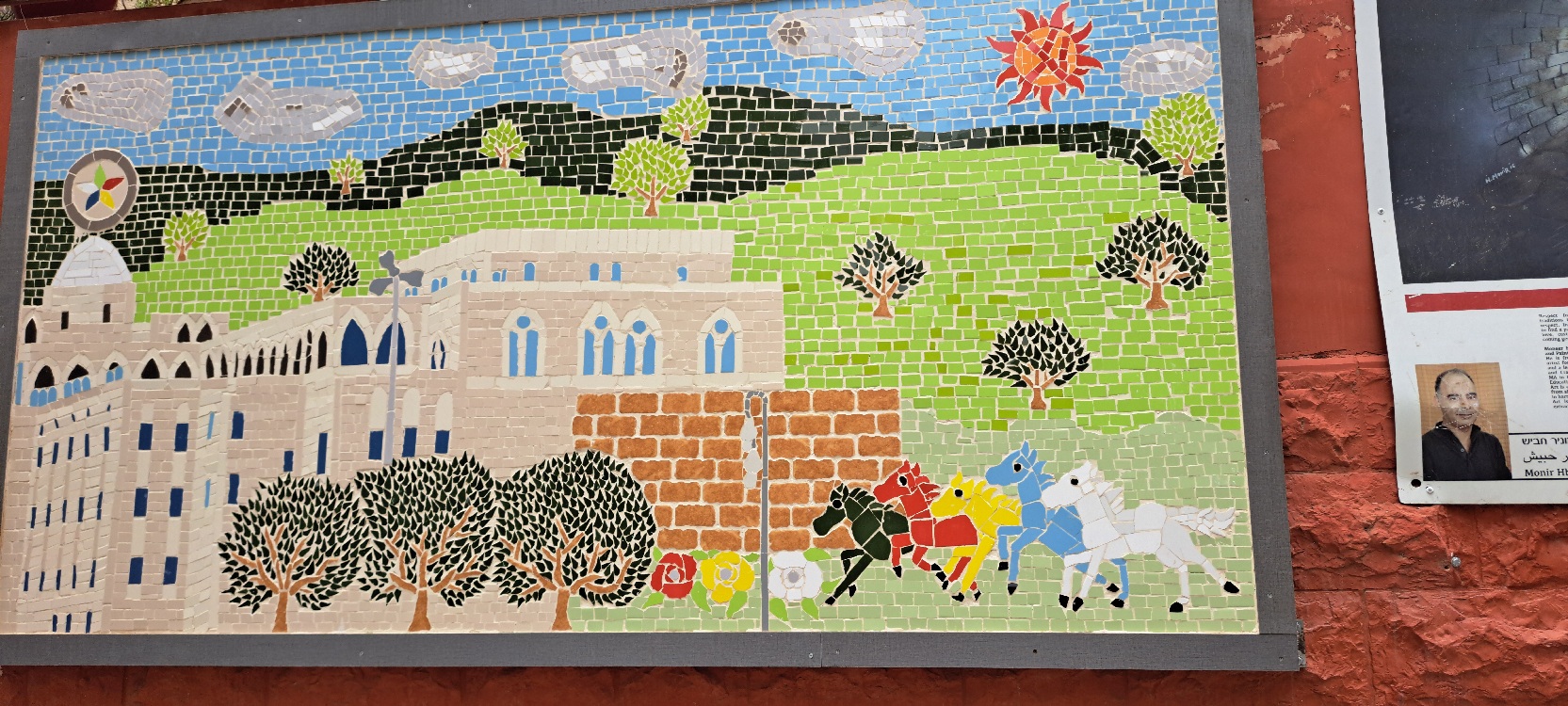
Yarka and Julis, Two Quaint Galilean Druze Villages
Strolling through two Pastoral Druze Villages in the Galilee
Yarka - a Quaint, Hostpitable Druze Town in Israel's North
We drove to Yarka, and here we finally took an actual stroll in the village. I took the opportunity to shoot some pictures.
Yarka is the second largest Druze village in Israel, after Dalyat el Carmel. It boasts about 16,000 inhabitants.
The architecture is wonderful. For safety and intimacy, the older buildings were built around inner courts. The windows were facing the court. Later they started building higher rather than wider.
Nir emphasized that despite not having lands and not continuing the agricultural tradition, the Yarka people actually got rich developing commerce and industries. There is a large metal plant and a mall, for example, owned and run by the Kadmani family.
The “Green lady”, Gili Sshultz, gives details about the agricultural history of the area that included Jewish and Christian settlements.
From left to right: Yarka – an old decorative door with the Druze 5-colored star; preparing for a wedding; and just a beautiful house.
The house shown in the middle picture was preparing for a wedding just as we passed by. They, of course, all invited us to come in and eat, but as tempting as that was (Druze food is imply wonderful), we thanked them profusely and moved on with our tour.
Creative Yarka
On the walls of central old Yarka, a special exhibition was set up of women’s artworks, and a bit further, of men’s as well. Alleys of Love it is called.
The initiative came from a Jewish woman, Yamit Blat, who started and led a social experiment to express dreams, conflicts and the imaginations of artists in the village.
I encountered Druze art previously in the Golan. A Druze artist, who studied in Syria, brought his works to the cherry picking event in which I participated as a volunteer (see my post on “Druze women Juggling Tradition and Moderna“).. He was very proud, and very deserving to be proud. Like the Yarka artists, he mostly depicted scenes from the Druze lore and daily life, focusing especially on workers at their daily work, but he used the traditional style normally employed to draw heroes.
The street art initiative attracts visitors to the village.
Background to the pictures is red, a color meaning love, bravery, courage and the secrets of the heart, according to Druze tradition.
The one thread joining all these creations is a great love for the village, the family, the elders and the tradition.
Left: Artist brought his creation to the cherry picking event at Mas’adeh. His pictures show daily workers in the style of Druze heroic figures
Women’s Alley – Art and Faith
Artist Nora Habish depicted her mother as a model for the all-loving Druze woman. Her chaste traditional dress prepresents woman’s modesty and beauty. Black and blue are women’s traditioanl colors.
Nora says art is life, a source of endless happiness and freedom, creating a connection of the inner self in a creative moment of emotion and harmony.
Najda Habish depicted a prayer for all children in the country and the world
Men’s artistic expression
Zahir Dahir’s picture of his grandparents expresses his love and longing for these righteous people who taught him to love, help others without wishing for reward. This is a cry from his heart to transmit these values tor all our children.
The above poem , in Hebrew and Arabic, by Yossef Harbawi, expresses his immense love for the village Yarka. He calls it a Paradise on Earth, standing like the olive tree in the fields. It brings its people the fruit of happiness, a history of honor and blessings. She, Yarka, is the fortress of the inhabitants’ lives. With the tomb of El Hader on her premises, the lands around the village are blessed with fertility. He asks God to keep and guard the “diamond of the pearls” as he calls it, the flag of his freedom.
Yarka and Julis - Sheikh Abu Fares and the Cave
Strolling down the streets and alleys of old Yarka was, indeed, wonderful. The pictures below shows Sheikh Ali Fares’s “niche” in the wall (on Ali Fares, see below). According to tradition, the stone from was brought over here from the cave (the nukta), where Ali went into seclusion. Maybe that’s the node through which the water God sent him emanated from.


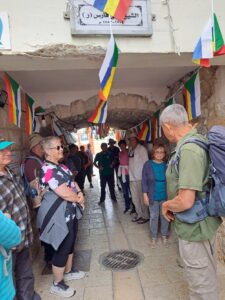
In these three pictures you can see the niche in the stone embedded in the passage wall. According to tradition, the stone was brought from the “Nukta” near Julis, where Sheikh Ali Fares was meditating in solitude. There are lots of Druze flags and our group is enjoying it all
Sheikh Ali Fares – man and legend
As to Sheikh Ali fares himself, here goes the story:
I will start with what Nir Keinan, our tour guide, told us: Abu Fares was born in the18th century. He was very religious, a mystic, and wrote mystical poetry. People would come to him to get blessings. Being from Yarka, the village had to host them all, and some people did not like it. He felt unwanted and moved to a Nukta, a small cave near Julis. God broke water for him from the walls of the cave, and he was busy contemplating the universe. The people of Julis saw that the Yarka folk rejected him, and invited him to move in with them. Specifically, the Amar and Tarif families adopted him. Thanks to Ali Fares, small inconspicuous Julis became the leader of the Druze community and a spiritual pilgrimage site.
Ali Fares and the goat kid
The Druze values Ali Fares cherished in particular were the Hib el Ahwan – the brotherhood, and Sadakat Lisa, clean tongue.
Clean tongue is certainly taken to extreme in the Druze tradition, as exemplified in the following story: a young goat passed in front of the cave, but Ali Fares saw only its rear part. A bit later, the shepherd showed up, asking the sheikh if he saw the goat. Ali Fares answered that he saw only one half of a goat. Clean tongue is saying only what you are certain about.
The stone was brought here from that cave.
But there is always another version:
According to a Julis website, what actually happened was that as a child, Ali Fares had a rough time following the death of his mother and the rough treatment he got from his stepmother. When the people of Julis adopted him, he felt uncomfortable with all their care and attention, and moved into a cave. A big search party was launched, and eventually they found him in the cave. He refused to leave, so they started bringing him food and water. He did not like that either, and prayed to God. God answered his prayers and supplied him miraculously with water from the wall and fruitful carob, fig and grape trees that grew all of a sudden by the cave.
The Nukta is a small stalactite cave, 0.8mX8m, and only1.1m in height. Today people come to visit it as a pilgrimage site.
Eventually, a compromise was struck between Ali Fares and the villagers. He got a room in Julis, but spent all his days praying and meditating in the cave. People came from Yarka as well, asking him to come back to his birth village, but he refused. He was buried in Julis and a dome was erected over his tomb. His presence is considered a blessing to the entire village.
Sheikh Amin Tarif’s tomb in Julis
The most notable site in Julis is Seikh Amin Tarif’s tomb. This was our last stop before driving home. You are invited to read about it and see pictures on my post: “Druze Cemeteries – State, Religion and Soul”
Druze, Israel’s Quiet Allies – History, Current Events, Women, Religion and More
In this post series I attempt to cover several topics pertaining to this fascinating and little-known religious group and ethnic minority in Israel, now on the top of world’s news. Here you can scroll through the topics according to your interest:
Under the Oak Tree in Yanuh-Jat – Intro the the Druze; Israel’s Mountain Allies and Tactics of Survival; Druze Crisis in Syria – Horrors, Analysis and What Next; Druze Secret Religion – for the Chosen Few; Druze Cemeteries – State, Religion and the Soul; Yarka and Julis – Two Quaint Galilean Druze Villages; Druze Women Juggling Tradition and Moderna.
If you like what you see and you want more,
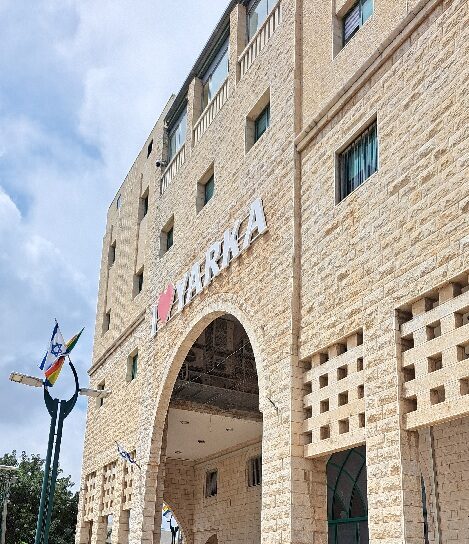

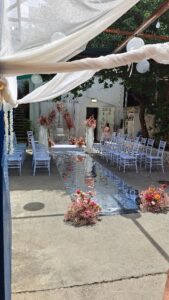

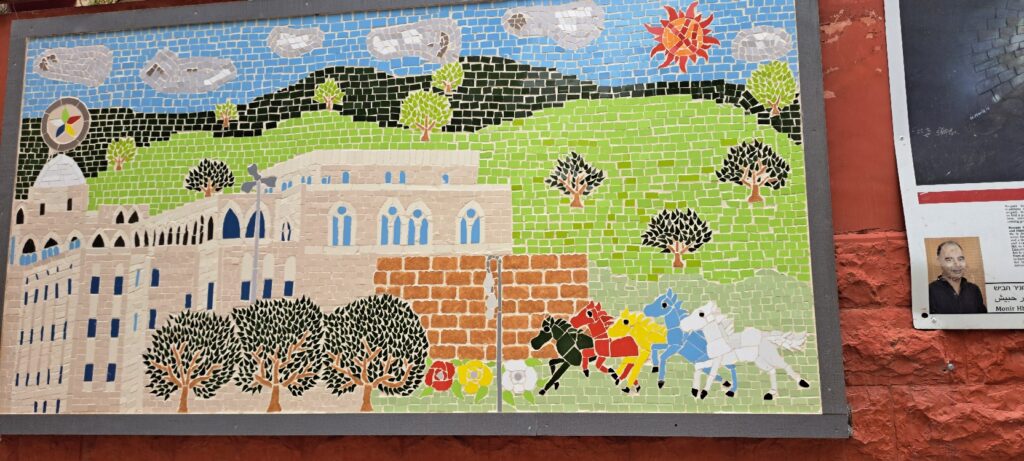
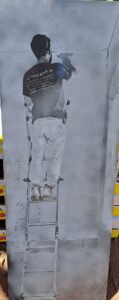
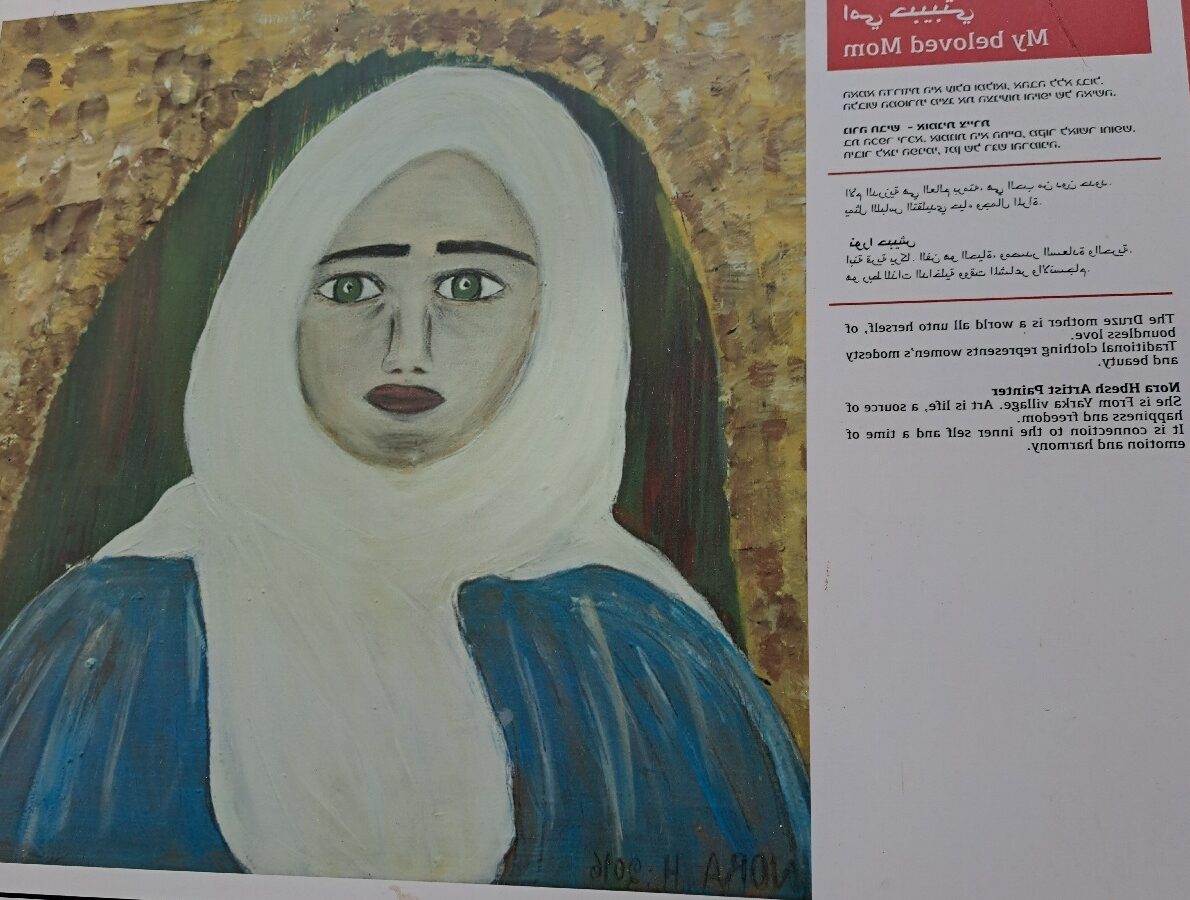
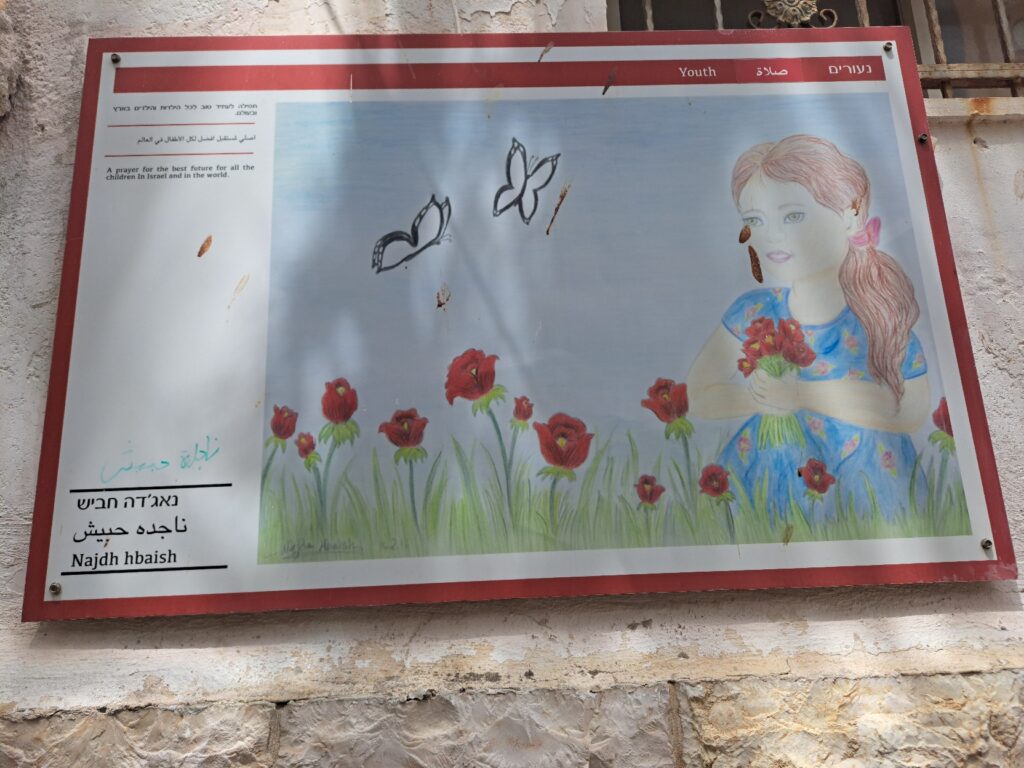





This Post Has 0 Comments